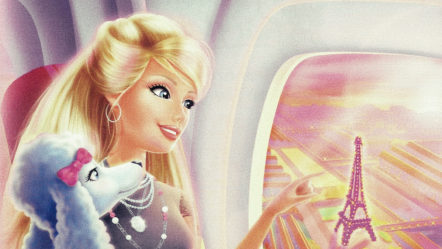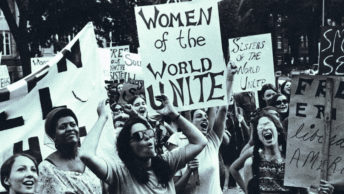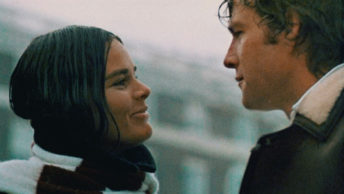How did we get here, a Southie kingpin asks one of his minions in Boston during the bussing and school boycott in the summer of 1974. This quote from a character in Dennis Lehane’s latest book, Small Mercies, has no real bearing on the recent Barbie film of Warner Brothers. I thought it applicable because of the surprising film’s depth, which included several similar questions that few humans find time to answer.
I had been wanting to see the film for a long time but always found some excuse not to. My bonus granddaughter’s near-departure for graduate school in Lexington, Kentucky prompted me to ask her. I had not been to a film since 2020 during the Covid. I thought an iconic figure, such as the 64-year-old Barbie might have something interesting to say about our culture.
Almost as much has been written about the dazzling, colorful and sometimes confusing production, written by director Greta Herwig and her co-writer Noah Baumbach than the most recent Trump indictment. The first thing one notices is the overwhelming palate of color, especially her signature pink that paints a portrait of an idyllic fantasyland more interesting and attractive than most of which Disney has created recently.
For days, I searched for an appropriate metaphor to explain Barbieland. During a Saturday Vigil Mass, it came to me. Barbies are inanimate toys, which millions of girls played with. Yet she and her friends live in a palatial community…a virtual materialistic paradise. This is terrifyingly close to a vision of a Communistic world yet to come. Unlike most authoritarian states, Barbieland is a matriarchy, where males are mere eye-candy and seem to live on the beach.
According to a review in Bazaar Magazine, Barbie is a highly nuanced film that wades through an exploration of female anxiety and existential dread of being a woman, leaving viewers with a ton of human meaning to unpack… This is fueled by gallons of contradictions, which might be attributed to their newly-acquired human consciousness.
Barbie’s creator was Ruth Handler, who with her husband Elliot, founded the Mattel Toy Company in early 1959. The Barbie doll was born at the American International Toy Fair shortly after on March 9th of that same year. Mrs. Handler observed her daughter Barbara playing with paper dolls, fashioned from adults. This inspired her to create the prototype 11” plastic figure with large feminine curves, in a striped black and white swim suit. The original Barbie was modeled on a limited-edition West German doll, Bild Lilli, created in 1955. This was the stereotypical Barbie doll, all her clones came from.
From her humble origins and original name, Barbara Millicent Roberts, the Barbie evolved into over 250 different iterations over the years. Diversity of race and ethnicity dictated dolls of different flesh colors. These were not ordinary housewives. The Barbie philosophy encouraged women to be all they could be. Their artificial beauty was only skin deep. Barbies should aspire to great heights. The film featured a president, surgeon, airline pilot, nurse, teacher and even a NASA astronaut that first appeared in 1965, a full 13 years before a woman ever ascended into space.
While the Bible did not mention it, most can agree it is not good for woman to be alone. Ken made his debut in 1961, two years after Barbie. Every male doll, with a sole exception, was named Ken. One of the Kens was a mermaid, pared with a Barbie of his species. Many had female matching counterparts. I cannot remember the Kens having any real profession, other than life guard. The stereotypical Ken, played by the scene-stealing, Ryan Gosling, defined his profession as simply beach.
The sole exceptions were the pregnant Midge, whom the film said had been discontinued and the androgenous, Allan. The latter’s movie role continues to baffle me. Supposedly, Ken’s best friend, who wears the same size outfits, seems akin to the human appendix, an appendage without a defined role. Though there is not any mention of it in the movie, Allan, who had also been discontinued was later recreated with Midge.
He later became her husband and the father of their children, though none of this is mentioned in the movie. Played by the painfully awkward Michael Cera, Allan reminds me of Mister Cellophane, the song sung by Joel Gray in the Broadway play, Chicago. He was someone who one could look right through and never know I’m there.
Barbie is played flawlessly by Margot Robbie, who as the first of her kind. She ruled over her plastic kingdom with pure glamour and seniority. She and her sisterhood Barbies were cluelessly happy at just being, dressing in beautiful outfits and looking pretty. This could easily be misconstrued as something like what the licentious Hugh Hefner called his Bunny Ranch, where he kept his harem.
Barbieland is not like that in principle, unless one looks to the completely male Mattel board, led by their nameless CEO, Will Ferrel, who plays his role with a bumbling cleverness that steals a few scenes. The Kens are similar to the drones in a beehive with Barbie as their Queen. While there is no hints of sexuality, which would be impossible for toy dolls, they are like their Barbie counterparts. They’re to be handsome, casually dressed and physically fit, thus completing the sterile but colorful scenery.
All of the above magically leads Barbie to have fallen arches, which ruin her look. From this she devolves into a frantic state where she starts to develop something like human anxiety. All the reviewers call this her existential crisis. She raises such metaphysical questions as why am I here? What was I made for?
Ken also seems to have human feelings and emotions that do not fit his job description. While these plastic toys have no endocrinal systems, one might think, he suffered from a rush of male hormones. He explains in an emotional song that captures the spirit of his life as Ken or what the reviewers called his himbo world.
In his touching solo, he pours out his heart, crooning Cause I’m just Ken; Anywhere else I’d be a ten. Is it my destiny to live and die a life of blond fragility? He ends with his expression of an unrequited love, Where I see love, she sees a friend; what will it take for her to see the man behind the tan and fight for me?
From here the plot becomes confusingly complex. One needs a large suspension of logic and reason. Barbie seeks counsel from one of the outliers that live in Barbieland, Weird Barbie. Played by comedian, Kate McKinnon, she represents the Barbie that had been tortured, mutilated and defaced by crayon, scissors and ink pen wielding girls who got tired of their dolls. Her isolation allows her to understand their ersatz reality.
Weird tells her that some Barbie owner has ruined their image by playing too hard with them. Weird Barbie should know, she is their avatar. It is obvious that one of the main things missing is a sense of any religious faith. Her creators at Mattel, only have profit and success as their motivations. On the surface, nothing bigger than Mattel is on their creative drawing board. They never made a Father Ken or a Sister Barbie. Considering that these professions require the discipline of celibacy, there is a delicious irony in that all these dolls are, in effect, practicing it. Midge’s child is a pure toy miracle.
This realization triggers something humans might call self-consciousness. Weird tells her that she must meet her Maker, namely Mattel. (I am not sure if the director intended it but this is one way of telling someone they are going to die.) Thus begins Barbie and Ken’s Great Adventure. After a chaotic trip to Mattel-land, Ken has an epiphany. He experiences a patriarchal society, which in reality favors its males, while females are relegated to near servitude.
Returning to Barbieland ahead of Barbie, Ken labors to turn her world into Kenland. He changes the entire nature of Barbieland with a strong whiff of male toxicity, decorated in an equine motif. When Barbie and her entourage, including the humans, Gloria, Sasha and the Mattel board, return, they find that Barbie’s world has been turned upside down. Gloria, the only female working at Mattel, gave away all her Barbies because she did not feel represented by them. But it was her daughter Sasha, who had mistreated them and served as the trigger for Barbie’s Angst.
Only Gloria has the power to snap the Barbies out of their doldrums. She instructs them on the female side of patriarchy where physical weakness can be overcome by their pure feminine guile. Acting on Gloria’s advice, the Barbies conspire to divide and conquer the Kens by exciting their weakness for the Green Monster of jealousy that has arisen since the Kens went sexist. The other Barbies start flirting with the Kens. They quickly get the message and declare war on each other, with and assortment of tennis racquets, ping pong balls, beach balls and sticks.
Once peace is established after the short battle with no apparent winner, the CEO declares victory for Mattel since all is back to normal. The Barbies decide to make changes where the sexes try to work for equal rights for both the Barbies and the Kens. The CEO hates this idea. Gloria suggests a compromise that Mattel make a plain Barbie with no special aspirations. His board convinces him it will be a great money-maker. Capitalism triumphs in the end.
With all the storylines apparently wrapped in a perfect happy ending ribbon, Barbie has an identity crisis. As Bazaar put it, after exploring the real world, and gaining access to human emotions, like fear and anxiety, she doesn’t know where her place in Barbieland is anymore.
Herwig returns Barbie’s Guardian Angel, (Ruth Handler) the mysterious old woman she met at Mattel, as a Deus ex Machina to resolve her inner conflicts. The pair wave goodbye to Barbieland and enter a white void which creates the feeling that the old Barbie is about to be reborn and enter a new life. But in truth, she is to be elevated to the Pantheon of Toys. Ruth tells her humans have only one ending. Ideas live forever. She admits that we must stand still so our daughters can look back and see how far they’ve come. This is a strong reminder of an old cigarette commercial, for Virginia Slims, Baby you’ve come a long way.
I believe this is the real message the feminist Gerwig is trying to deliver. Like the Marxist paradise, it requires a deeper explanation. Just how far have women come? Yes, they have become better educated than many of their male counterparts. They have entered virtually all professions, including sports and vie for equality of pay, amenities and news coverage with men in everything.
Women have ventured into virtually every profession Handler could have imagined. But at what cost? They are no happier than when they were the pliable victims of the Queen of Feminists, Betty Friedan and her book, The Feminine Mystique, published in 1963. This veiled attack on marriage and family portrayed all housewives on Long Island, as lonely and frustrated. Friedan sabotaged the traditional belief that fulfillment as a woman had only one definition for American women after 1949—the housewife and mother.
For director Herwig, Handler is really the linchpin of the movie. In an interview, she said Handler was Barbie’s mother, inspired by her own daughter. Consequently, her hundreds of off-spring have inspired millions of girls around the world to attain the highest levels they can. This is not your standard mother/daughter relationship and if so it badly misses the target.
Since then, more than half of all marriages have ended in divorce or separation. Many women decide to skip marriage in favor of co-habitation. Many live in poverty. Women die of heart attacks, strokes and alcoholism as often as their male counterparts. (Think Virginia Slims.) Millions of their children, especially those of single women, linger in day care centers of all makes and models. By their teens, too many have turned to alcohol, drugs and sex as they ignore all adult counsel.
Thanks to Marxist philosopher, Antonio Gramsci, millions of women have abandoned their faith in a forgiving and merciful God. Women have aborted over 64 million of their unborn children since 1973. Many were teens when they aborted, suffering an invisible scar that will haunt them to the end of their days.
How many women, despite their material success, really feel fulfilled by their careers when their human nature has placed the undeniable maternal instinct into their DNA? The Barbie phenomenon will always be just that…a bright candle that will eventually burn out from its lack of human oxygen. Feminism can be as toxic as male domination. Handler’s ideas are riven with false expectations and principles, for which American society has paid the price, which is much higher than their expected billion-dollar gross.








